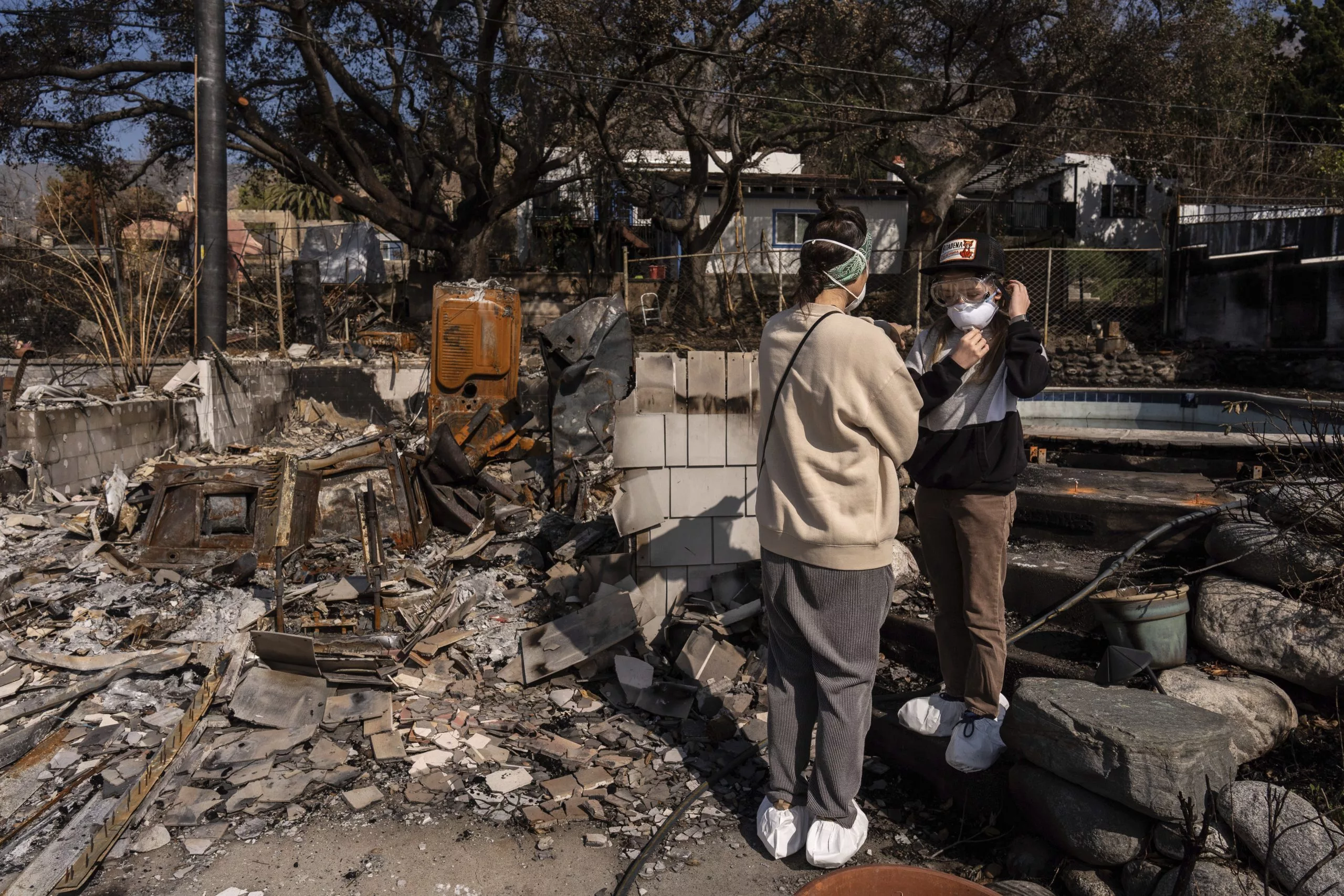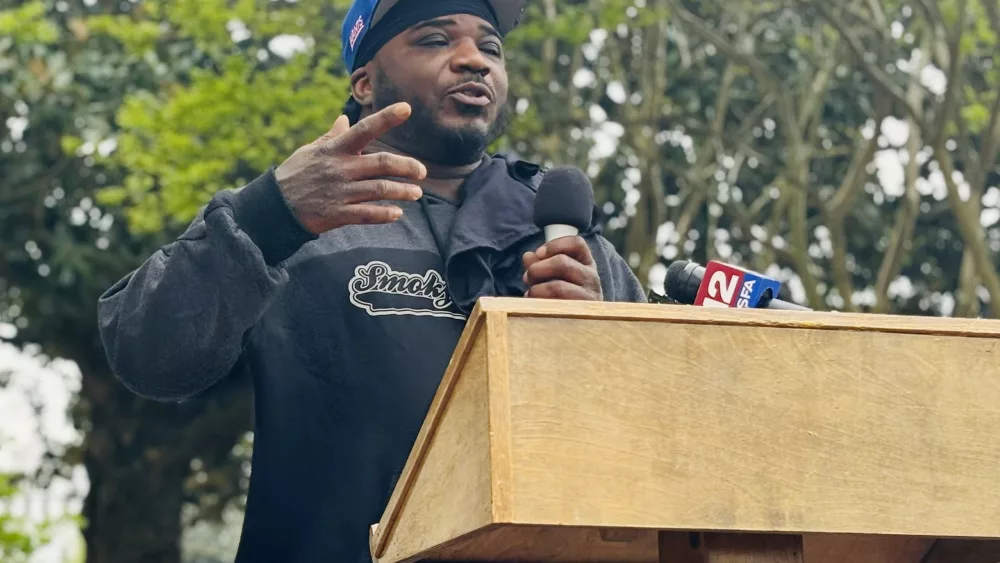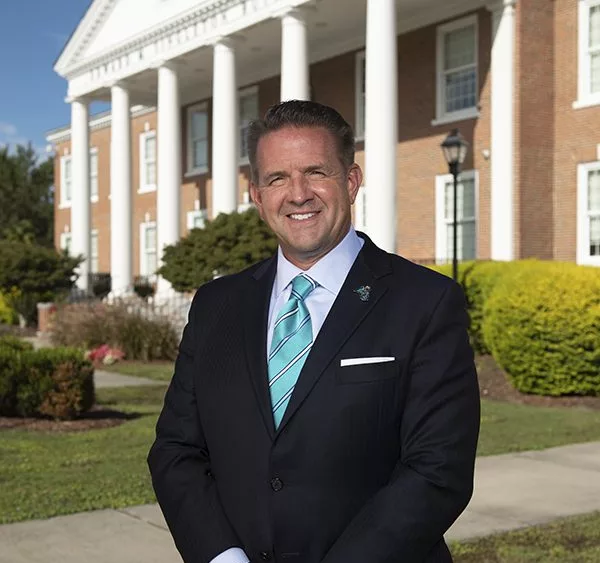LOS ANGELES (AP) — Ceiba Phillips, 11, couldn’t believe what he saw when he returned to his Southern California neighborhood a month after a wildfire reduced it to rubble.
The ruins of his best friend’s house and his beloved school. His house survived, but the backhouse where his grandparents lived and packed him lunch every morning was reduced to ashes and a silver pool of melted aluminum. His favorite cozy diner, Fox’s, was decimated.
Seeing it in person — after seeing it through photos — brought shock and tears.
“There’s not even a word created for it,” Ceiba said. “It’s sad, it’s heavy, somewhat angry. Why did this have to happen?”
The Eaton fire that tore through Altadena on Jan. 7 left parents and children alike to deal with the trauma of one of the most destructive fires in California history. As people return to their neighborhoods, many kids are navigating the grief of losing everything that was familiar. Their parents, meanwhile, are learning how to help them cope.
Children thrive on routine, and reestablishing one as quickly as possible is key to helping kids cope, said Lori Peek, a sociology professor at the University of Colorado Boulder who studies the impact of natural disasters. It’s essential for kids to stay connected with their friends, and for parents to have honest conversations with them about the difficulty of what they are facing.
“Being honest about our own emotions and opening up, but then being very inviting for children to share what they’re feeling, what they’re grieving, what they’re experiencing, that can be one way to start those really important conversations,” Peek said.
It’s this kind of space that Chiara Angelicola, who works in early childhood education, was trying to create when she organized a Kids Town Hall event for families affected by the fires. Children had the opportunity to share how they felt and participate in art and somatic therapy exercises, which focus on how trauma can affect the body. Ceiba’s 4-year-old sister, Quoia, went with their mother, Alyson Granaderos, along with more than 100 other kids and parents.
“A lot of these kids had a lot to say … and some of it even made the adults uncomfortable,” Angelicola said. “I think that exercise in learning how to be uncomfortable experiencing certain feelings is very necessary for children because we’re modeling for them that feelings won’t hurt us.”
Hundreds of therapists and non-profits also have offered their mental health services for free to victims of the fires.
Ceiba’s home was one of about six on his street that wasn’t destroyed, but it sustained so much smoke damage it’s not livable right now. On a recent day, the family carefully entered wearing respirator masks and protective equipment.
Ceiba looked out his bedroom window and said he didn’t care that his house had survived. “I’d rather have all of Altadena,” he said.
Ceiba remembers every detail of his last normal day.
School let out early due to intense Santa Ana winds that fueled the fires. He and his sister went to Ceiba’s best friend’s house. They played on a trampoline, drew comics, and chucked LEGO figurines off the balcony.
“I’ve probably been to his house more than 2,000 times,” Ceiba said.
That evening, the family received a text message from Ceiba’s grandma asking if they saw the fire that had broken out nearby. They ran to their window and saw the whole mountainside ablaze.
“I was on the floor like praying, please protect my house and my family. And you know, mom’s like, ‘Come on, you got to get up, pack your stuff,’” Ceiba said.
The 11-year-old sprang into action, dumping his clothes and quarters into his bag and packing for his younger sister.
They sheltered in their dad’s office in neighboring Pasadena. Ceiba could barely sleep. By the morning, much of his neighborhood was gone.
Ceiba’s days have taken on a rhythm again, even at his new school in Pasadena.
When he greeted his mom on a recent afternoon, he shared a fun fact he’d learned that day: In 1846, a future president, Abraham Lincoln, had almost joined the ill-fated Donner Party as it set out from Springfield, Illinois, on its infamous journey out West, only to get trapped in California’s Sierra Nevada.
Ceiba has decided to play the saxophone in band class, and his state project will be on Michigan, where his mom is from. Granaderos said her son already seems to be adapting.
But his conversations with friends now veer into unusual topics for 11-year-olds.
“The insurance isn’t covering us and how’s your house? How’s this person’s house?” Ceiba said, sharing what he and his friends discuss.
He wonders what will become of his community. He’s optimistic though.
“I know Altadena and I know that it’s going to stick together,” Ceiba said.
Ceiba had clamored right away to go back home after the fire, but Granaderos was hesitant. After the dust settled, she knew that allowing her kids to see and experience what happened was part of the healing process.
“You’re facing this realization of certain conversations you have to start to have with your kid, right?” Granaderos said. “There’s beauty in the world, and there’s also a lot of sadness and destruction.”
Quoia burst into tears when the family drove past what was left of The Bunny Museum in Pasadena dedicated to rabbits. She loved seeing the giant inflatable bunnies that loomed over the street corner nearly every day. Ceiba cried along with her.
“I just couldn’t really take it,” he said.
But not all is lost.
Granaderos named both of her children after trees — Ceiba, the tree of life, and Quoia after the Sequoia. She planted a sapling of the iconic Sequoia — which is extraordinarily resilient to fire, insects and disease — in the home’s backyard when Quoia was a baby.
After the fire, it is still standing.
Brought to you by www.srnnews.com








